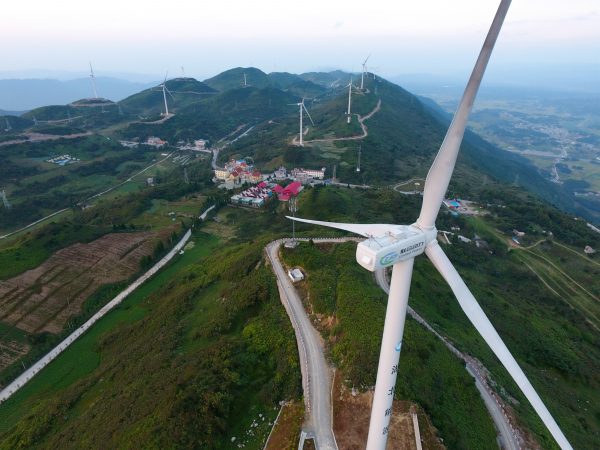By 2025, ASEAN will experience an estimated 50 per cent rise in energy demand and aims to increase the share of renewable energy sources in its primary energy supply to 23 per cent. According to the International Energy Agency’s Southeast Asia Energy Outlook 2019, the current share of renewable energy in regional primary energy supply is around 15 per cent. The regional goal to achieve 23 per cent in the next five years involves a transition towards the modern use of renewables, a process that requires planning and a significant amount of capital for infrastructure development.
Despite the fact that most countries in Southeast Asia are known for their renewable energy potential, the region is still heavily dependent on hydrocarbon resources. This is partly due to some non-renewable energy resources being heavily concentrated in the region, making a third of ASEAN member countries energy producers and exporters. For energy-importing countries, conventional energy from hydrocarbons is often considered more affordable.
Country-specific energy contexts among Southeast Asian countries are the primary barriers hindering an integrated energy policy objective on a regional basis. The energy policies of developing and developed Southeast Asian countries diverge significantly. Countries with fully-evolved energy systems and fully-functioning industrial sectors no longer consider nationwide access to modern energy services an indispensable energy security issue. Developing countries are often not ready to pursue environmentally and socially acceptable energy investment since the electrification rate in some of these nations is low and a significant proportion of primary energy supply is still based on traditional biomass.
Some member countries have set their own national renewable energy goals and have enacted regulations to reduce emissions. The rest are still confronted with other energy problems such as energy poverty and the affordability of domestic energy. ASEAN must find a strategy to encourage a transition to cleaner energy by taking into account country-specific energy contexts. Otherwise, the 23 percent goal will fall on some countries rather than being a collective regional effort.
Another barrier to achieving ASEAN’s targets is the perceived conventional threat towards energy security. Energy security as a concept is mainly derived from the security of hydrocarbon supply — a negative-sum game between states. The greater the energy resources a state acquires, the more secure its energy sector and system is — at the expense of others. Perceived threats are consequently related to supply disruption, including the physical unavailability of supply, overreliance on external energy resources to the point where energy trade is a political weapon, or the inability of an economy to afford increasing imported energy prices.
Such a perception of energy security hinders cooperation. As the share of renewables in the primary energy supply of Southeast Asia is still minimal, energy security discourse is driven by and shaped by conventional fossil fuel energy. States are uncertain of other states’ intentions and whether oil and gas pipelines will be used as bargaining chips, or whether a trading partner will use ‘demand’ as an economic sanction. Additionally, states consider whether foreign investment in energy infrastructure is how states exercise their power and interfere with others’ domestic affairs. This explains why energy independence is such a key policy objective.
ASEAN has to find a strategy to promote mutual trust in regional energy security frameworks so that cooperation can truly prosper. Any transition strategies to cleaner energy either at a national or regional level will fail without regional cooperation.
The current regional power structure — focussing on the intra-regional emerging powers and relevant actors in the regional energy sector — acts as a barrier to cooperation. Due to increasing energy demand and populist policies to ensure ‘cheap’ energy, foreign energy trade within the region has continued to expand. While this enhances ASEAN’s connectivity in the energy sector, it contributes to the creation of a regional energy power structure. Some Southeast Asian countries have launched their outward foreign investment in neighbouring countries where the output of power generation can be imported back into the investing countries. Thailand’s investment in Laos is one such case that has raised concerns.
This type of foreign energy investment has led to a distorted picture of energy development in the region. Generated electricity is exported to investors and the local population must pay higher prices for electricity generated locally but invested in by foreign actors. While the recipient country enjoys an increased share of renewables in national primary energy supply, the end users of this renewable energy are in a neighbouring country.
Phase I of APAEC demands ‘a roadmap with clear policies’ for electricity trade but the commercialisation and marketing of renewable energy technologies has made the current situation much more complex. There is no roadmap with clear policies and there are no guidelines addressing good governance for regional energy trade and investment. ASEAN needs to keep an eye on the development of emerging sub-regional powers that are often overshadowed by more powerful regional major powers. Without regional governance, ASEAN’s transition to cleaner energy risks becoming a myth.
Kamonphorn Kanchana is a Lecturer in the Faculty of Political Science and Public Administration at Chiang Mai University.


ASEAN region should be a leader in this area. With stability of ASEAN trust should not be hard to develop. Contrast with parts of South & East Asia where regional trust is in places sorely lacking.